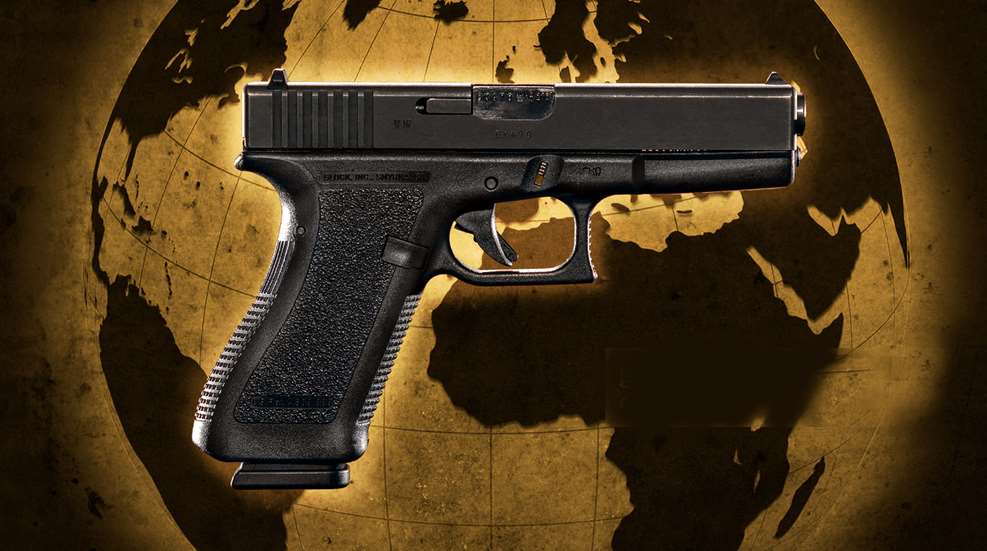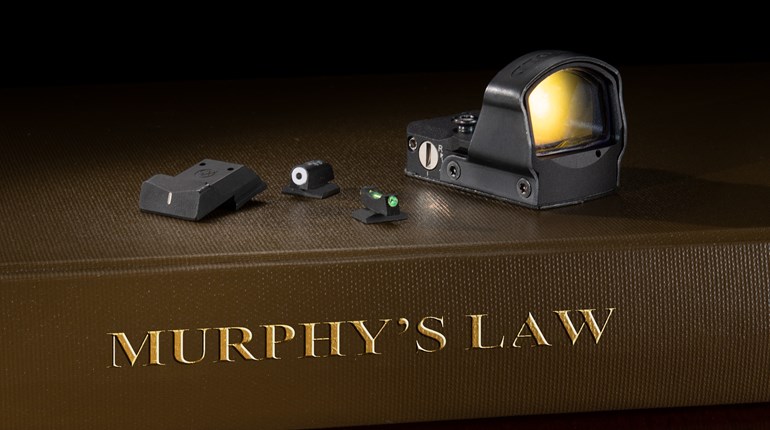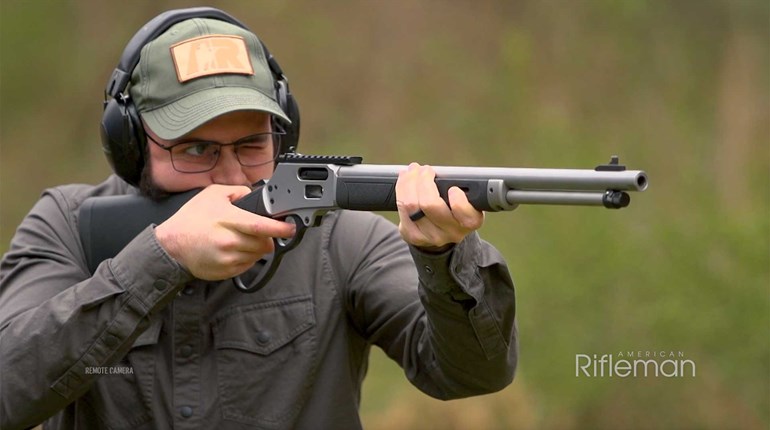
The landscape of the combat handgun in America was very different at the dawn of the 1980s. For starters, the U.S. was still largely revolver country, but it’s the world of duty/service pistols that I’m looking at.
Pistols hadn’t changed much over the preceding few decades since World War II, although the experience of the war had changed how they were made.
Prior to “The Big One,” pistol design was exemplified by sidearms like the classic Colt Government Model and the Browning GP35 Hi Power. To build a pistol, you took big blocks of steel and machined away everything that didn’t look like a gun part.
Even the simplest bits of the lockwork were made this way. If you’ve never seen a pre-war trigger from a genuine G.I. M1911, it’s very different from the current ones, which are a sheet-metal loop bent into the stirrup shape of the bow, with a cast metal or plastic trigger shoe affixed to it. Back then, the whole thing—bow and shoe—was all one piece, machined from steel.
But, this is time-consuming, leaves a lot of raw materials lying on the floor in the form of metal chips and doesn’t necessarily result in a part that’s any more functional. (In the case of 1911 triggers, the heavy original ones limit how light the pull can be, lest the gun “double” under recoil as the inertia of a steel trigger trips the sear again. Those plastic or magnesium shoes found on comp guns aren’t just for looks and convenience.)
The pressure of churning out zillions of firearms during World War II caused manufacturers to explore ways to simplify and speed up production.
Going back to 1980, the pistols that best exemplified the postwar art were the semi-autos from Smith & Wesson, which were slowly gaining a foothold in the duty holsters of America. While the frame and slide were machined from forgings in the classic antebellum style, much of the lockwork consisted of precision stampings.
Smith & Wesson’s pistols weren’t the only semi-autos spreading across the marketplace back then. Beretta’s Model 92 was an evolution of its earlier products, marrying the Walther-esque locking block of the Model 1951 9 mm duty pistol with the double-action trigger mechanism and double-stack magazine of the Beretta .380-chambered Model 84 Cheetah.
The construction of the original Model 92 was largely a throwback to pre-war norms, though, being machining-heavy and largely devoid of stampings or castings. Not so with another pistol introduced in the 1970s, though.
SIG Sauer’s P220 was designed originally for the Swiss military, that needed to replace its P210 service pistols—which had become too costly to produce—with something less machining-intensive. (Ironic, since the P210 itself was a cheaper-to-build replacement for Swiss Lugers.)
In fact, the reason we know the company as SIG Sauer today—and this is a bit of a simplification—is that Schweizerische Industrie Gesellschaft of Switzerland partnered with J.P. Sauer & Sohn of West Germany to construct the pistol, in large part for the stamping techniques that Sauer had pioneered coming up with volkspistoles during the war.
So, that was the state of things as the era of “Starsky & Hutch” segued into the era of “Miami Vice”: The domestic duty semi-automatic market was dominated by venerable Smith & Wesson, with Beretta and SIG nipping at its heels.
Meanwhile, across the pond, the Austrian army was adopting a new handgun to replace their World War II-vintage Walthers.
All the usual suspects showed up to the resulting pistol trials: Heckler & Koch, Fabrique Nationale, Beretta, SIG Sauer from neighboring Switzerland and hometown favorite Steyr Mannlicher—only to lose to an upstart blaster made by a company that was, up to that point, largely known for manufacturing precision-molded commercial plastic products.
Gaston Glock had assembled a team of designers and turned out a pistol that had no single unique feature, yet managed to upend the entire industry over time.
Polymer frames? Remington did it with the Nylon 66 rifle back in the 1950s, and H&K’s VP70Z pistol had been on the market more than a decade when the Glock G17 debuted.
Striker-fired operation? Literally the first semi-auto pistol design John Moses Browning ever sold was the striker-fired FN1899.
Extensive use of stamped sheet metal for the small parts? Refer to all the paragraphs above this one. Sometimes, though, the sum is greater than the parts.
For instance, much is made of Glock’s popularization of ferritic nitrocarburizing (aka “Tenifer”) surface treatment to the world of handguns. But, an overlooked benefit of that is that it offers the rust resistance of stainless steel while sidestepping the many problems inherent in stainless firearm construction.
By using Tenifer-treated carbon steel, Glock can manufacture pistol parts from softer, cheaper grades of carbon steel that are faster to machine and don’t wear out cutter heads as fast, and then surface-harden the resulting part in the salt bath. As an added bonus, this sidesteps all the galling issues that plagued the development of early stainless steel semi-autos (as I can attest, having owned an early AMT semi-automatic).
The lockwork is extremely simple, consisting almost entirely of small stampings and a couple little coil springs. As a gunsmith friend once quipped while working on a Glock “I can’t get over the fact that it’s basically all just toaster parts in here.”
The frame was the most notorious part and the cause of much hand-wringing back in the day because people were sure it would cause the Glock to be invisible to metal detectors. How that was supposed to work when most of the gun was made of steel is a mystery, but let’s not expect anti-gunners to make sense.
The reason it was notorious in the industry, though, was because there’s just no way to make a metal frame as cheaply as a polymer one. Even the previous budget-manufacturing champ, finish-machining from a casting, was more expensive and time consuming than just squirting goop into a mold.
The traditional manufacturers tried to keep up as best they could, replacing forged parts with cast or metal-injection-molded (MIM) ones, swapping out metal parts with polymer ones, reducing machining steps, but the manufacturing-cost gap was just too wide.
If you were going to compete with Glock on price and still maintain anything like a healthy profit margin, you had to jump on the plastic, striker-fired bandwagon, as a quick look around the showcases at your local gun emporium will now very quickly demonstrate.
Gaston, who passed away recently, was not a gunsmith by training or avocation, but it would not be out of line to say that he’s had as large an effect on the handgun market as such enduring legends like Sam Colt and John Moses Browning.
Controversial? Yup. Aesthetically challenging? Perhaps. The Glock G17 nonetheless transformed and—with the expiration of early patents—continues to transform the defensive-handgun market, like it or not.






































